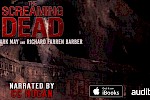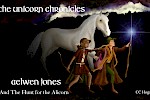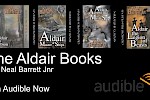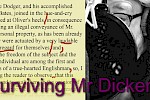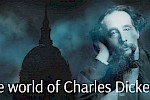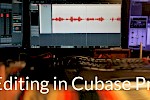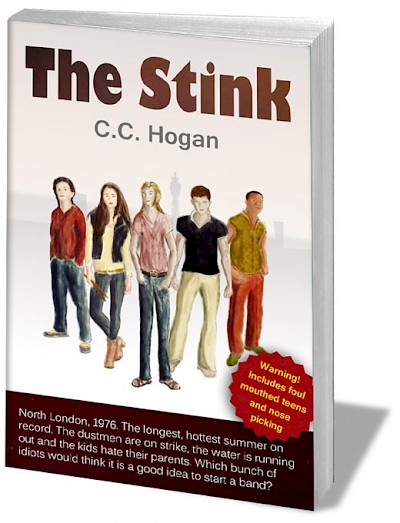I love writing dialogue but it can be very difficult to get right. I am not a literary expert and the chances are that I will say things here that will make writing teachers roll their eyes, but this is my approach and the way I try to think my way around this most vital part of story telling. Bring on the actors!
"So, like, you want to go to see a film?"
"Hmm? I don't know. Was that your mum or not?"
"On the phone?"
"Yeah."
"Yeah, it was. Tea?"
"I got to go piss."
"Where is the paper?"
"Have we paid the bill this week?"
"Oh, here it is. What page are the film listings on again?"
"I can't hear you. What? Oh, hang on. You didn't replace the toilet paper!"
"Hang on."
"Poke it round the door."
"Terminator?"
"I am trying to go!"
"Oh, mum says my brother is coming down on Sunday...."
I have no idea whether they went to see a movie in the end or what else mum said or even if the mystery of the toilet paper was ever resolved, but I reckon this is an example of a realistic conversation that will be recognised by anyone, and is probably the last thing you would put into a book or play unless you were making a very specific point about conversations!
Conversations in real life are very rarely linear unless they are in a forced situation like a formal interview. Our brains are not the logical, precise mechanisms that we try to achieve with our computers, but are complex, not very efficient, difficult to control, imperfect, organic lumps that vary considerably from one to another. They do not always seem to be compatible with each other either. When we have a conversation in real life, to a certain extent it is a matter of experimentation, of trying things out. The less we know someone, the more we have to concentrate. The more we know someone, the more comfortable we are at having confused, incomplete and imperfect communication.
The short dialogue above is typical of that between two people who know each other well. They both know that they will get to where they need to end up at some point in the not-too-distant future, possibly via a bit of irritation, and are happy to wander all over the place in the process.
All very interesting, but outside of a very dedicated piece centered around a duologue that is intended to demonstrate exactly that sort of relationship, if your conversations in your average fantasy or mystery were like that it would drive your audience spare.
Information v relationships
The dialogue you write in your story has two very specific functions: It must convey information that moves the story on to its next way point and it must demonstrate the relationships between the people communicating.
Trying to find the balance between the two in a timely fashion is the bit that keeps me awake at night. I am very conscious of what I have demonstrated with the opening excerpt, the different way people will communicate depending on how well they know each other, but I do not want to bore the reader when all I am trying to get across is, "here come the dragons."
"Excuse me, sir!"
"What is it, sergeant?"
"The dragons are approaching, sir."
"Thank you, sergeant, I can't see them. Which way?"
"From the east sir, over the mountains."
"Thank you, sergeant. Any food available?"
Pretty boring, but it gets the point across. It also shows the relationship between the two characters; very formal and precise. If they were brothers, and not worried about rank....
"Hey, John. They are on their way."
"Who?"
"The dragons, git. Who else?"
"I don't know. Where are they?"
"Over there. Oh, Jill says you left your sandwiches behind."
"Did I? Where are they, I can't see them!"
"Use your eyes, bruv!"
"Oh, right got them. Nice mountains those."
"Suppose. Here, have one of mine."
"Thanks. Let's go meet them."
"Mind the dragon poo...."
It is the same conversation, but these two know each other well and are happy to add in irrelevancies and speak in the wrong order, mixing up their objects and subjects all over the place. We still have that the dragons are coming and they are coming over the mountains, but we get there by a slightly different route. In addition, the characters do not need to explain everything. So when one says "here, have one of mine," he is talking about the sandwich. He would have no need to say, "here, have one of my sandwiches that I remembered and you didn't," which is what he has said, effectively.
The trouble is that the conversation is a lot longer than the first example, nearly twice the length. If this had been a more complex conversation then it would be really dragging after a while. So, we need to truncate it and yet still demonstrate this easier, informal relationship.
"Jill said you forgot your sandwiches again."
"I'll steal yours. When are those dragons getting here?"
"Up there. Over the mountains."
"Oh, right! Pretty sight. Let's go meet them!"
"Mind the poo."
Same conversation, same information and same relationship. But it is only five lines. It has another advantage, other than taking up less paper or celluloid, it has a nice snappy feel to it. Of course, if you are really short of time within the scene:
"Dragons over the mountains!"
"I see them."
You get to explain to Jill how she ended up on the cutting room floor with the sandwiches she made.
Telling a gag
Everything is a gag. I don't mean that everything is funny, but that everything has a gag-type construction.
Gags, or jokes, are basically very neat conversations where the humour is not just expressed in a punchline but, to quote an Irish comedian of old, "in the way you tell 'em."
Their construction is very simple. A premise or set up, followed by the story, an optional sudden turn to the left, and wrapped up with the punchline.
- A white horse walks into a bar
- "Can I have a beer?" asked the horse.
- "Do you know there is a whisky named after you?" asked the barman.
- "What, Fred?"
Line one is the premise: A horse is going for a drink in the pub. Lines two is the story and three is the sudden turn to the left (though it is also part of the story), which in this case is a little conversation. Line four is the punchline. Hey, I said it was a gag, I never promised it would be funny!
Sometimes the premise and the story can be combined. So called "one liners" are often thus, proving that they are not, of course, one liners at all.
- A white horse walks into a bar.
- An iron bar.
One of the most vital parts of both these examples is that I am not giving any more information than is required to make the joke. Why is this important? Timing! Timing really is the secret of great comedy, but it extends far beyond WHEN you say something to HOW you say it. This can be the number of words, the stress, the speed, the type of words; getting the combination right produces better comedy. As an example, take the line, "Do you know there is a whiskey named after you?".
If this were a real life conversation he would have said something like, "Afternoon mate, Beer was it? Lovely day ain't it. You know I was thinking as you were walking across to the bar that I have a whisky up on my shelf that is named after you. You realise that?"
Well, more realistic perhaps, but there is no timing to it, it is far too complicated and by the time the poor actor has got to the end of the sentence he is drowning in rotten tomatoes.
So, the neat version is what I call the "gag construction" and I believe it applies in story telling, especially dialogue, almost the entire time, even where there is no comedy. The reason is because, going back a heading, to get our two brothers talking in such a way as to show their intimate relationship without being too long winded, you need the same philosophical approach as you use for a joke.
Here is a very simple example.
"I got a phone call earlier, John. She had real problems breathing and they did what they could but she has died. "
"Oh, darling, I am so, so, very sorry." He took a long breath. "You must be feeling terrible. Is there something I can say? This is horrible."
Yeah, yeah, we got that you are sorry mate! Again, it is probably the sort of overly complicated, unhelpful thing that our brains come up with on the spur of the moment. It is hardly our gag construction, however, and it is possibly not even dramatic enough. Let's apply our gag rules.
"They have phoned." She took a haunted breath and looked up at him.
"Oh, gods! I am so sorry!"
You could argue that we have omitted lots of vital information, but actually, we haven't. The important idea to convey from the first extract is that a character has had a phone call and it is devastating news. The fact that it involved a death and breathing problems is the cause, perhaps, but it does not describe the upset.
The second extract uses the gag construction and it focuses on exactly what is needed at that particular point in the conversation or story. If the details are then important, you can start working those through in a second conversation or maybe have covered them much earlier and hope that your audience is keeping up with the plot.
Which leads me neatly to:
Audiences are actually quite intelligent
I have a fondness for some US produced dramatic series like CSI, Without a Trace (when it was on), House and so on. These are highly produced, well scripted and edited programmes. I also occasionally enjoy some less well-produced offerings like Haven. The budgets and subsequent production quality are very obviously of a lower league, but what makes Haven less good than House is nothing to do with budget at all; it is because the producers treat their audience like idiots.
I need to skip back to comedy for a moment here. The good gag construction works not just because it is neat, but it assumed that the audience can fill in the gaps. Billy Connolly seems to understand this intuitively. His gags are pages long and are written in a series of brackets - jokes within jokes.
Joke one {aside one (start joke two [interesting distraction] end joke two) explain aside one} Joke one punchline.
Except he sometimes uses more brackets than I did here. These routines can be phenomenally long, but when he starts working his way out of his brackets, he NEVER reiterates what he said before. He assumes that you remember how he started. He is right too and audiences love him for it.
A less funny comedian, perhaps Ronnie Corbett in the UK who tells his stories from an old chair, would say something like, "now you remember earlier I said...."
He has killed his joke dead; right there at that moment. Why? Because he became paranoid that the audience couldn't keep up. Connolly knows they can and do and he takes advantage of it in his writing and gets far bigger laughs.
Additionally, he is not overburdening his script with extra words that slow everything down.
The horror of some TV drama is that they forget all about how clever their audience is and either overburden the script in the first place, or worse still, add additional dialogue after filming when the character's back is turned. Not only are these lines unnecessary (the script writer got the balance right in the first place) but they never match sound wise so become the audio equivalent of a big sticky label.
Audiences are clever enough to understand what is going on. If they are not following it is not because they are idiots, it is because your programme is rubbish in the first place.
The same applies to books. When you write dialogue, only explain something if it is vital at that point; so either something that the reader does not know, or because it is logical that the person would say it as part of a natural conversation. Not this then:
"My mother is coming round!"
"What, that woman who gave birth to you?"
"Yes, how did you know?"
Do not get your characters to explain the plot
This is really part of treating your readers like idiots. Unless you are writing in the first person with the narrator also being the main character, then you the writer are telling the story, not your characters; they are living the story.
When you write dialogue, remember who the characters are talking to. More importantly, remember the one person they are NOT talking to - the reader. So, NEVER have a character tell another character something they already know.
Jessica Fletcher: "Sheriff, we need to get back to your police station at the bottom of main street, Cabot Cove."
Sheriff Tupper: "I agree. We will take my car with the flashing light."
Jessica Fletcher: "I will solve the crime of passion where Jane got murdered by being stabbed when we get there. "
Sheriff Tupper: "Let me telephone ahead to make sure the murderer is there so we can surprise her."
I am reasonably sure that such a scene was never in Murder, She Wrote, but I have seen some examples in shows over the years that are pretty damn close.
If in dialogue you find that you have to explain or flag up part of your plot, then stop! You have done something wrong earlier that you need to sort out before you write that next section.
He said, she enthused...
This is something that I look at carefully when writing, or more probably, editing: how many times do I need to say "he said" at the end of speeches?
To me, these slow down good dialogue and is the joy in writing a play; you don't need them. However, I am writing books at the moment and that means I do.
The first thing to say is don't be too concerned by overusing "said." I have lists of word alternatives on the site which can give you some variations if you want to mix it up a little, but you really can overdo it and it becomes tiring to read. Your audience expects lots of "said" and will read over them after a while, realising that it is the "he" or "she" or "the dragon" that is important, not the "said."
Of course, it is nice to avoid them as much as possible in the first place.
If you have a duologue then you can, in theory, do without them altogether once the conversation starts. Of course, if it is a very long duologue, especially one that might include a couple of page turns, then you may want to put the odd one in just so the poor old reader doesn't have to keep count.
There are a couple of things that can help you here. The easy one is putting in the odd pause.
He put his hands on his hips and glared at her.
In a complicated conversation, especially an argumentative one, it can create moments of contrast and gives you a natural point you can use to make sure everyone is keeping up.
The second, much harder one is making it obvious who is speaking by HOW they are speaking. For the sake of argument, I am going to have to be really obvious here.
John was angry. "I don't give a damn, what you think. It must be sorted now!"
"Look, please try be calm about this."
"Why? Go on! Why?"
"We are in a terrible situation here, and it is getting so, so complicated."
"Yeah, right! It is your bloody brother..."
"Please, it is not just about my family, you must know that."
"So you keep saying. But it always comes back to them, doesn't it. Again, and again and again!"
"Oh, this so hard and so many are getting hurt..."
Now, I hope from that you can get the idea that one character is angry, and I have flagged it up to set the scene, but the other is trying to remain calm and is feeling the pain in the situation, whatever it is. An angry person might rant, but they will often do so in short bursts, little phrases or sentences. Someone who is trying to keep things more even or who is feeling daunted or in pain, will tend to speak slower using different phrasing and words. It is subtle, but there is a difference, and if you can make sure your two characters do have different speech patterns and different word use, whether that is because they are in a different mood or are simply a different person, then you will have less need to identify them once the scene starts; the conversation will do that job for you.
This can also help when it comes to using descriptive actions. It can be a lot more interesting and easier to read if the words and phrasing portray the mood so you do not have to explain it. That way you can avoid:
"Get that bloody, stupid dragon off the damn rosebed!" she whispered seductively.
Certainly, if you want snappy repartee between characters, then if you are having to identify them continuously the snappiness might disappear rapidly. If you look at some of the great comedy dialogue writers like Neil Simon (of The Odd Couple fame and others), then his best moments are restricted to duologues where character confusion is less likely.
In your books, I strongly suggest you adopt this idea so that when you need an argument or fast-paced conversation, you let your other characters fade into the background and focus on just two of them for the fastest, wittiest section.
It is in the Performance
We all say this, time and time again:
Read everything out loud!
Never is this more important than if you are writing dialogue. Even in a novel that will never be anything but a novel, when characters start talking, for that moment it becomes a play, and plays are performed out loud.
It is vital that you read out your dialogue again and again to make sure that firstly each individual speech really belongs to that character and secondly the scene as a whole is not laboured, awkward or unnatural.
I believe it is almost impossible to do this silently. So much so that I often speak out loud as I type; I am doing it now!
It also helps with things like punctuation. Look at how lines are linked together. Did it need a new sentence? Did it need more commas, or maybe less? Did I remember the poor, old, neglected semi-colon?
Reading out loud, performing it and not muttering it, will help put the conversation into context and give you the chance to see where the weaknesses are and where it is simply too long and wordy.
Conclusion
Dialogue is, unfortunately, the car crash waiting to happen. I am sure that in my books my dialogue is some of my strongest writing, but I bet some of it is also my weakest.
it is terribly difficult to get right, but if you don't, your characters can come across as stupid, wooden, uninteresting and, worst of all, unbelievable.
Whether your characters are women, men, dragons or "small furry creatures from Alpha Centuri" (© Douglas Adams), your audience, your readers, must be able to relate to them. If their speeches do not sound possible or believable, then they will fail and your fans will close the book.
Good luck! He said.












